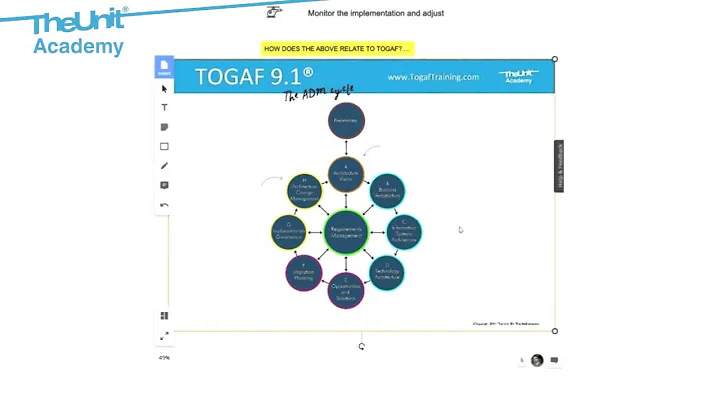Demystifying Action Potential: The Ionic Basis of Nerve Communication
Table of Contents
- Introduction
- Resting Membrane Potential
- Action Potential: What is it?
- The Purpose of Action Potential
- The Stages of Action Potential
- 5.1 Depolarization
- 5.2 Repolarization
- 5.3 Hyperpolarization
- The Ionic Basis of Action Potential
- 6.1 Voltage-Gated Channels: Sodium and Potassium
- 6.2 Sodium Influx: Depolarization
- 6.3 Potassium Efflux: Repolarization
- 6.4 Hyperpolarization: Slow Closure of Potassium Channels
- The Role of ATPase in Restoring the Resting Membrane Potential
- Other Characteristics of Action Potential
- Refractory Period
- Conclusion
Action Potential: The Basics of Nerve Communication
🧠 Introduction
Welcome to Dr. Sci's Physiology Academy, where we make the complex world of physiology easy, exciting, and effective. Today, we're diving into the fascinating realm of action potential—the electrical signals that enable communication within excitable tissues like nerves and muscles. In this article, we'll explore the stages and mechanisms behind action potential, unraveling its ionic basis and shedding light on the inner workings of this vital phenomenon.
💡 Resting Membrane Potential
Before we fully delve into action potential, it's important to understand the concept of resting membrane potential. When a cell is at rest, there is a separation of charges across the cell membrane, creating a potential difference. This potential difference, usually around -70 millivolts, keeps the cell in a polarized state with a negative charge inside and a positive charge outside.
💥 Action Potential: What is it?
Action potential refers to the propagation of electrical impulses along excitable tissues, facilitating communication. While resting membrane potential represents a static state, action potential signifies the ability of the cell to generate and transmit electrical signals. It's like a wire that allows electrical impulses to be conducted, ensuring effective communication throughout the body.
🎯 The Purpose of Action Potential
The main purpose of action potential is to detect and respond to changes in the environment. When a stimulus occurs, an action potential is generated, enabling electrical impulses to propagate and transmit to the control center responsible for maintaining homeostasis. It's a crucial process for effective cellular communication and overall bodily functions.
🔄 The Stages of Action Potential
Action potential involves three major stages: depolarization, repolarization, and hyperpolarization. These stages collectively transform the potential from a resting state to an active state, enabling the transmission of electrical signals along the cell's axon.
5.1 Depolarization
Depolarization refers to the reduction in polarization, specifically the decrease in the potential difference across the cell membrane. Normally, the cell membrane remains polarized, with a negative charge inside and a positive charge outside. However, when a stimulus is strong enough to reach the threshold level, depolarization occurs. It is primarily driven by the influx of sodium ions through voltage-gated channels. As sodium rushes into the cell, the membrane potential becomes less negative, initiating the process of action potential.
5.2 Repolarization
After depolarization, repolarization takes place. Once the membrane potential reaches a peak value, voltage-gated sodium channels become inactive, halting the influx of sodium ions. Simultaneously, voltage-gated potassium channels become active, leading to the efflux of potassium ions. This efflux of positive ions helps restore the negative charge inside the cell, bringing the membrane potential back to its resting state.
5.3 Hyperpolarization
Following repolarization, a brief period of hyperpolarization may occur. This phase involves the slow closure of potassium channels, resulting in an excess efflux of potassium ions. As a result, the membrane potential becomes even more negative than the resting state. However, the action of the sodium-potassium ATPase, a vital protein, gradually restores the resting membrane potential and resets the cell for further action potential.
🔬 The Ionic Basis of Action Potential
Understanding the ionic basis of action potential sheds light on the movements of sodium and potassium ions that drive the various stages. Two types of voltage-gated channels play a critical role: sodium voltage-gated channels and potassium voltage-gated channels. These channels open and close in response to the potential difference across the cell membrane.
6.1 Voltage-Gated Channels: Sodium and Potassium
Voltage-gated channels are unique channels located in excitable tissues. They respond to changes in charge and are essential for the generation and propagation of action potentials. The opening and closing of these channels depend on the potential difference across the cell membrane, allowing the influx or efflux of specific ions.
6.2 Sodium Influx: Depolarization
During depolarization, voltage-gated sodium channels open in response to the depolarizing stimulus. This opening allows an increased influx of sodium ions into the cell, reducing the potential difference and making the membrane potential less negative. The positive feedback mechanism introduced by sodium influx triggers further depolarization and enables the rapid rise of the action potential.
6.3 Potassium Efflux: Repolarization
As the depolarization phase reaches its peak, voltage-gated sodium channels become inactive and cease the influx of sodium ions. Simultaneously, voltage-gated potassium channels open, facilitating the efflux of potassium ions from the cell. This efflux of positive ions aids in repolarization, gradually restoring the negative charge inside the cell and bringing the membrane potential back to its resting state.
6.4 Hyperpolarization: Slow Closure of Potassium Channels
After repolarization, some voltage-gated potassium channels may still linger in the active state, causing a brief period of hyperpolarization. In this stage, the slow closure of potassium channels leads to an excessive efflux of potassium ions. The resulting more negative membrane potential is gradually restored to the resting state through the action of the sodium-potassium ATPase.
⚡ The Role of ATPase in Restoring the Resting Membrane Potential
The sodium-potassium ATPase, a crucial membrane protein, plays a vital role in maintaining the resting membrane potential. It actively transports sodium ions out of the cell and potassium ions back inside. This action counteracts the excessive depolarization and hyperpolarization, restoring the resting membrane potential and preparing the cell for future action potentials.
🌟 Other Characteristics of Action Potential
Action potential exhibits various characteristics that further enhance its functionality. These include the all-or-nothing response, refractory period, and propagation along the axon. The all-or-nothing response ensures that action potential occurs fully or not at all. The refractory period prevents immediate re-excitation, allowing the cell membrane to recover before generating another action potential. Finally, the propagation of action potential enables the rapid and efficient transmission of electrical impulses along the axon.
🧪 Refractory Period
The refractory period is a critical aspect of action potential, ensuring efficient and unidirectional propagation. It consists of two phases: the absolute refractory period and the relative refractory period. During the absolute refractory period, the cell is incapable of generating another action potential, regardless of the strength of the stimulus. In contrast, the relative refractory period allows the generation of an action potential, but only with a more substantial stimulus than usual.
🔚 Conclusion
In conclusion, action potential is a fundamental process that enables effective communication between cells in excitable tissues. By understanding its stages and ionic basis, we gain insight into the crucial mechanisms that underlie nerve communication. From depolarization and repolarization to the involvement of sodium and potassium ions, action potential provides a remarkable framework for information transmission. Its characteristics, such as the refractory period, further optimize the efficiency of cellular communication, ensuring the smooth functioning of our intricate physiological systems.
Remember, the more we explore and comprehend the intricacies of action potential, the more we unravel the secrets of our extraordinary nervous system and the remarkable world of physiology.
🌐 Resources:







